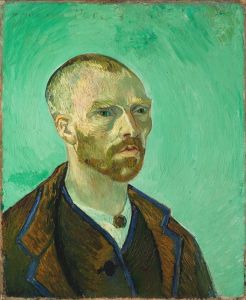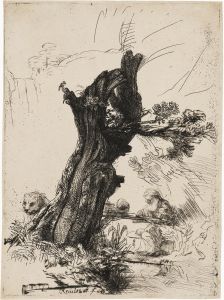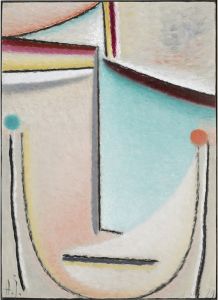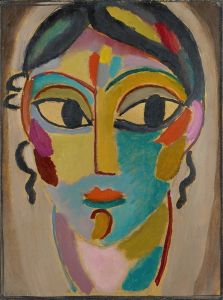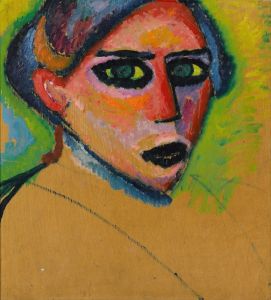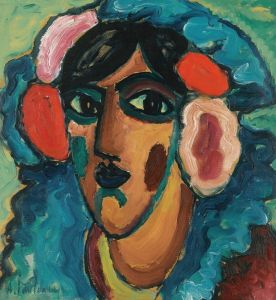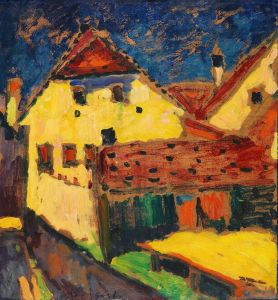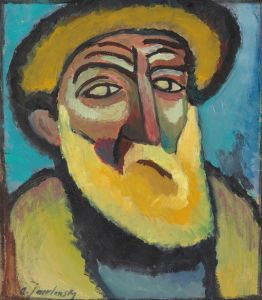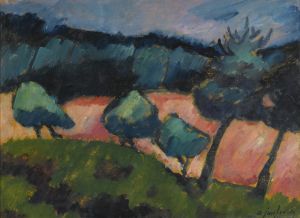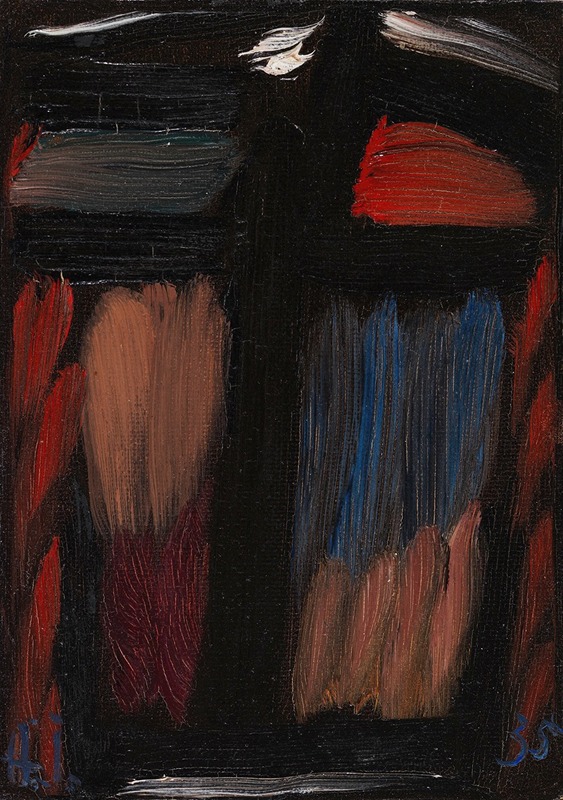
Meditation N. 26
A hand-painted replica of Alexej von Jawlensky’s masterpiece Meditation N. 26, meticulously crafted by professional artists to capture the true essence of the original. Each piece is created with museum-quality canvas and rare mineral pigments, carefully painted by experienced artists with delicate brushstrokes and rich, layered colors to perfectly recreate the texture of the original artwork. Unlike machine-printed reproductions, this hand-painted version brings the painting to life, infused with the artist’s emotions and skill in every stroke. Whether for personal collection or home decoration, it instantly elevates the artistic atmosphere of any space.
Alexej von Jawlensky was a Russian expressionist painter, known for his vibrant use of color and his exploration of the human face as a subject. One of his notable series of works is the "Meditations," which he began in the later years of his career. "Meditation N. 26" is part of this series, which reflects Jawlensky's deep interest in spirituality and the inner life.
Jawlensky was born in 1864 in Torzhok, Russia, and he initially pursued a military career before turning to art. He studied at the Imperial Academy of Arts in St. Petersburg and later moved to Munich, where he became associated with the avant-garde art movement. He was a member of the Neue Künstlervereinigung München (New Artists' Association of Munich) and later the Blaue Reiter (Blue Rider) group, which included artists like Wassily Kandinsky and Franz Marc.
The "Meditations" series, created during the 1930s, represents a significant period in Jawlensky's artistic journey. During this time, he was living in Wiesbaden, Germany, and was suffering from arthritis, which increasingly limited his ability to paint. Despite these challenges, he continued to work, focusing on the theme of meditation as a means of exploring the spiritual and emotional dimensions of human existence.
"Meditation N. 26" exemplifies Jawlensky's mature style, characterized by simplified forms and a focus on the expressive potential of color. The painting features a stylized human face, rendered with bold, sweeping brushstrokes and a vibrant palette. The face is abstracted, with features reduced to essential lines and shapes, conveying a sense of introspection and inner contemplation.
Jawlensky's use of color in "Meditation N. 26" is particularly noteworthy. He employed a range of hues to evoke different emotional states and spiritual experiences. The colors are applied in broad, flat areas, creating a sense of harmony and balance within the composition. This approach reflects Jawlensky's belief in the spiritual power of color and its ability to convey profound truths about the human condition.
The "Meditations" series, including "Meditation N. 26," is often seen as a culmination of Jawlensky's artistic and spiritual exploration. These works are not merely portraits but are intended to be visual meditations, inviting viewers to engage with the deeper aspects of their own consciousness. Jawlensky's interest in spirituality was influenced by various sources, including Eastern philosophies and the teachings of theosophy, which emphasized the interconnectedness of all life and the pursuit of spiritual enlightenment.
"Meditation N. 26" and the other works in the series have been exhibited in various museums and galleries, contributing to Jawlensky's reputation as a significant figure in the expressionist movement. His work has been influential in the development of modern art, particularly in the way it bridges the gap between representational and abstract art.
In summary, "Meditation N. 26" by Alexej von Jawlensky is a powerful example of the artist's late work, characterized by its abstracted forms, expressive use of color, and spiritual depth. It reflects Jawlensky's enduring quest to capture the essence of human experience and his belief in the transformative power of art.








